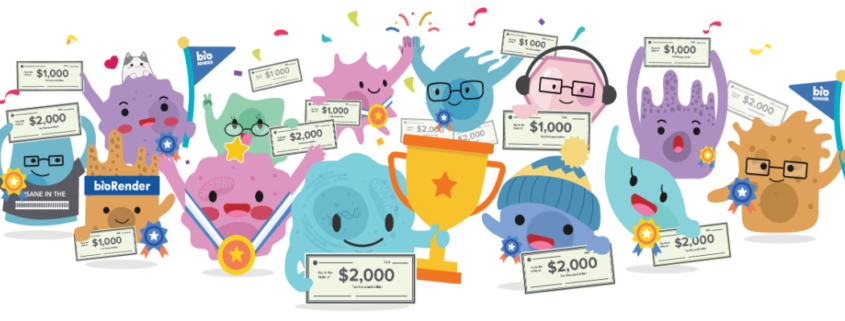BioRender is looking for the creative side to every scientist
The BioRender team is hosting its Annual Graphical Abstract Contest. There are $50,000 worth of prizes to be won and the winners, in a wide range of categories, will be announced throughout June. The BioRender contest is also an opportunity to connect scientists from all around the world through their love of aesthetically pleasing scientific figures.
BioRender provides software for hassle-free, professional looking science figures. In a quest to save scientists from endless frustrating hours trying to create diagrams on PowerPoint, BioRender provides a purpose-built scientific drawing platform. It contains thousands of pre-made icons and other tools to enable scientists to make their scientific figures more appealing.
To showcase the capabilities of BioRender and to bring scientists together – showing them they can put their creative selves to use in their scientific work – BioRender is hosting its Annual Graphical Abstract Contest with $50,000 worth of prizes to be won. The submission deadline has now passed, but the several winners will be announced throughout the month of June. The Early Bird Winners were already announced; congratulations Ailin, Patrick, Bailey, Sebastian and Alessia! But there is also an ‘Experts’ Choice Award’ and a ‘People’s Choice Award’, as well as awards for medical illustration and one for entries related to COVID-19. The winners for these categories will be announced later in the month.
We’ve just announced 600 semifinalists in our graphical abstract contest, hand-picked by expert judges! ?
Check out all semifinalists in our gallery. Remember to vote for your favorites & help them take home People’s Choice Award! ? #academicchatter https://t.co/80khD0wq4U pic.twitter.com/cS2Y8GIOZD
— BioRender ?? (@BioRender) June 12, 2020
There are hundreds of testimonials attesting to the usefulness and quality of BioRender, and that is not surprising – the submissions for the contest are beautiful! The public voting closes tomorrow so you still have some time to head over to the submission pages, take a look and vote for your favourite!
Example entry, submitted by Vickey-Luanne Harris.

- Turning frustration into change: Jean-Sébastien Caux, founder of SciPost - August 9, 2021
- Dr Nicola Nugent: Publishing Manager at the Royal Society of Chemistry - December 7, 2020
- Public Engagement and Trust in Science: In Conversation with Dr. Farzana Meru - November 23, 2020
- Is the peer review process trustworthy? Perspectives by Dr. Jurado Sánchez - November 4, 2020
- Prof. Maria Baghramian: Policy, Expertise and Trust in Action - October 29, 2020
- Prof. Luke Drury: ‘When Experts Disagree’ - October 5, 2020
- Are we what we hear? A reflection on sound, identity and science communication - September 27, 2020
- Sign your Science - September 22, 2020
- Raven the Science Maven - August 18, 2020
- Dr Mark Temple: DNA Sonification or when Scientist are musicians - August 5, 2020





To showcase the capabilities of BioRender and to bring scientists together